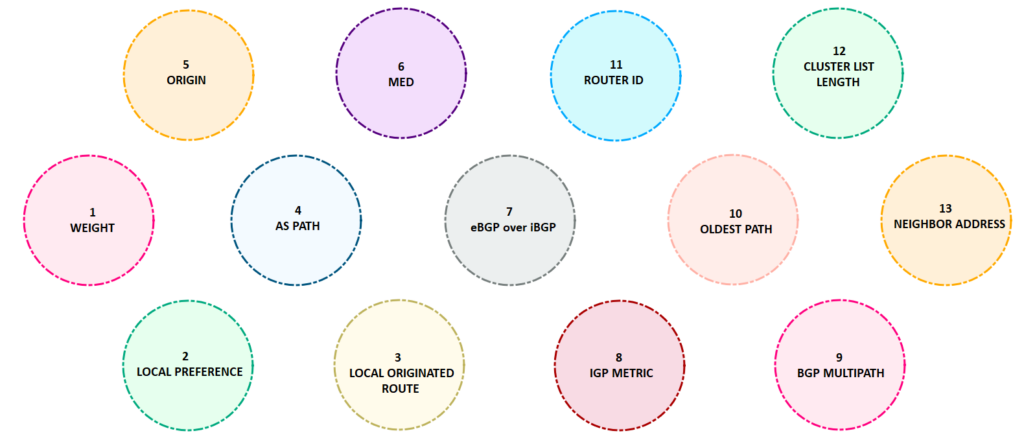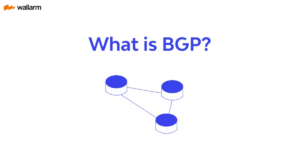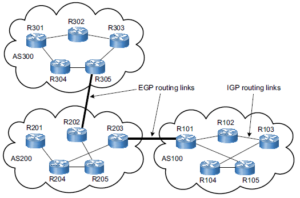BGP Path Attributes: The BGP Path Selection Process
5 min readBGP Path Attributes
BGP has many attributes in choosing the best path. It is like an ice cream. It has many flavors. I bought Gianduia flavor from Gelato Messina while I was preparing this topic. I think I need loads of sugar to feed my brain as this BGP topic is robust and every attribute can be well-explained if we are going to lab it.
BGP’s attributes are mainly for path manipulation and these can influence either outbound or inbound traffic. It has a systematic process that it uses to choose the best path in the network.

The first thing that BGP checks is whether the WEIGHT is configured or not. WEIGHT is Cisco Proprietary so it is obvious that it prioritizes Cisco devices which has BGP WEIGHT configured. In short, if you are using Cisco devices, WEIGHT is the first thing it checks before it goes on with the series of standard BGP attributes. Keep in mind that WEIGHT is local to the router and doesn’t pass to other routers. The higher the value is more preferred.
Next in line is the LOCAL PREFERENCE. This attribute influences the outbound routing. The higher value is preferred. Unlike WEIGHT, which has a default value of 0, LOCAL PREFERENCE has a default value of 100.
If LOCAL PREFERENCE is not configured, BGP looks for locally originated routes. As the name suggests, it is a route originated by the local router via network statement, redistribution, or aggregate statement. If you do “show ip bgp” routes with weight set to “32768” is considered as local routes. When weight is configured check for routes with next hop of “0.0.0.0.” You can also use “route-map localonly” command to get locally originated routes. It is also local to the router an not pass to other peers.
The most commonly used BGP attribute is the AS PATH. Unlike, LOCAL PREFERENCE, AS Path is a Well-Known Mandatory attribute and this attribute influences inbound routing. It should be present in every update and should be recognized by all BGP speakers. When a router running BGP session sends an update to its peer, it appends its own AS number. The shorter the AS path length is more preferred. To manipulate the incoming traffic to our preferred route, we can use the “as-path prepend” command.
Like, AS PATH, ORIGIN is also a Well-Known Mandatory attribute. In this attribute, the lowest is preferred route. IGP is lower than Exterior Gateway Protocol (EGP), and EGP is lower than INCOMPLETE. If you do “show ip bgp” you will see ORIGIN codes at the far right portion: i – IGP, e – EGP, and ? – incomplete. You will no longer see “e” in the “show ip bgp” output as it is already obsolete. The question mark “?” indicates redistribution and “i” means the network command is used to advertise the route.

Multi-exit Discriminator (MED) is an optional non-transitive BGP attribute. It is usually not used as the first five attributes are often utilized before this one. MED can influence routers in the same AS (iBGP) but not on different AS (eBGP). When a router learns a route from a peer, the MED’s value is kept and retain to its iBGP peers, but the value will be peeled off once it passed to eBGP peers. You can use the “set metric” command under the BGP router process if you are using a route-map or use the “default-metric” command. Take note that the lowest MED value is preferred over the higher MED value.
If MED is not configured, it checks whether the route is learned via iBGP or eBGP. Routes learned via eBGP is more preferred than routes learned via iBGP. If both routes are learned via eBGP then it chooses the lowest IGP value (administrative distance) to the next hop.
BGP Multipath is not considered as a tie-breaker but a determination if it can allow multiple installation of path in the routing table. The WEIGHT, LOCAL PREFERENCE, AS PATH, ORIGIN, MED value, same neighbor type (eBGP / iBGP) and IGP metric should match with the best path for it to be considered as an additional path to the destination. Be aware that if multipath is not enabled the default value is 1 which means it goes back to the BGP’s golden rule that it only chooses one best path to the destination.
The next step that BGP considers is the oldest route received. The oldest route in the routing table is preferred over the new ones. This step can be skipped if router ID is used for tie breaker and that the “bgp bestpath compare-routerid” command is used. If the command is used, the lowest router ID will be selected as the best path. If there is no manually configured router ID, the highest loopback IP is chosen and if still there is none, then the highest configured physical IP address. By the way, before you considered the highest physical IP address, it is necessary to check the route with minimum cluster list length configured. This is present in a route reflector environment. There’s more about this when we get to the route reflector topic.
Before we end this topic, let me remind you that before it goes to these 13 procedures, the first thing that BGP check is whether the next hop is reachable or not. What’s the use of all of these if the route is not reachable anyway?
- AS Path, BGP, BGP attributes, BGP multipath, BGP path selection, Border Gateway Protocol, eBGP, EGP, iBGP, IGP, Local Preference, MED, Multiexit Discriminator, Origin, route reflector, router ID, Weight
- 5 Comments
5 comments on “BGP Path Attributes: The BGP Path Selection Process”
- Pingback: BGP Path Attributes Types – Sassenach Learns
- Pingback: iBGP: BGP Next-Hop-Self Command – Sassenach Learns
- Pingback: BGP Local Preference Attribute: The Higher The Better – Sassenach Learns
- Pingback: The Internet Protocol: Border Gateway Protocol (BGP) Overview – Sassenach Learns
- Pingback: BGP Route Reflectors (RR) – The iBGP Reflection Mechanism – Sassenach Learns
Leave a Reply
Your email address will not be published. Required fields are marked *
Comment
Name *
Email *
Website Search






